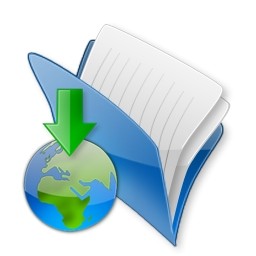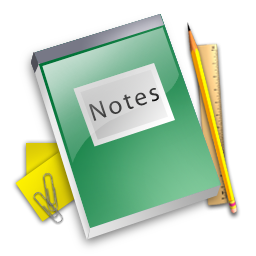Social Science
CBSE class 09 Social Science study material in PDF format. MyCBSEguide provides solved papers, board question papers, revision notes and NCERT solutions for CBSE class 09 Social Science. The topics included are India and the Contemporary World - I, Contemporary India - I, Democratic Politics - I, Economics and Disaster Management.

CBSE, JEE, NEET, CUET
Question Bank, Mock Tests, Exam Papers
NCERT Solutions, Sample Papers, Notes, Videos

myCBSEguide App
Complete Guide for CBSE Students
NCERT Solutions, NCERT Exemplars, Revison Notes, Free Videos, CBSE Papers, MCQ Tests & more.
Download CBSE class 09 Social Science study material in PDF format. MyCBSEguide provides solved papers, board question papers, revision notes and NCERT solutions for CBSE class 09 Social Science. The topics included are India and the Contemporary World - I, Contemporary India - I, Democratic Politics - I, Economics and Disaster Management.
COURSE STRUCTURE
CLASS IX
Unit 1: India and the Contemporary World - I (40 Periods)
Two themes from the first sub-unit and one each from the second and third sub-units could be studied.
Term I
Sub-unit 1.1 : Events and processes:
In this unit the focus is on three events and processes that have in major ways shaped the identity of the modern world. Each represents a different form of politics, and a specific combination of forces. One event is linked to the growth of liberalism and democracy, one with socialism, and one with a negation of both democracy and socialism.
Two themes of the following:
I. The French Revolution:
(a)The Ancient Regime and its crises.
(b) The social forces that led to the revolution.
(c) The different revolutionary groups and ideas of the time.
(d) The legacy. (Compulsory Chapter-1)
II. Socialism in Europe and the Russian Revolution:
(a)The crises of Tzarism.
(b) The nature of social movements between 1905 and 1917.
(c) The First World War and foundation of Soviet state.
(d) The legacy. (Chapter 2)
(OR)
III. Nazism and the Rise of Hitler:
(a)The growth of social democracy
(b) The crises in Germany.
(b) The basis of Hitler's rise to power.
(c) The ideology of Nazism.
(d) The impact of Nazism. (Chapter 3)
Map Work - Theme one only (3 marks)
Term II
Sub-unit 1.2: Livelihoods, Economies and Societies:
The themes in this section will focus on how different social groups grapple with the changes in the contemporary world and how these changes affect their lives.
Any one theme of the following:
IV. Forest Society and Colonialism:
(a)Relationship between forests and livelihoods.
(b) Changes in forest societies under colonialism. Case studies : Focus on two forest movements one in colonial India (Bastar) and one in Indonesia.(Chapter 4)
V. Pastoralists in the Modern World:
(a)Pastoralism as a way of life.
(b) Different forms of pastoralism.
(c) What happens to pastoralism under colonialism and modern states?
Case studies: Focus on two pastoral groups,one from Africa and one from India. (Chapter 5)
VI. Peasants and Farmers:
(a) Histories of the emergence of different forms of farming and peasant societies.
(b) Changes within rural economies in the modern world.
Case studies: focus on contrasting forms of rural change and different forms of rural societies (expansion of large-scale wheat and cotton farming in USA, rural economy and the Agricultural Revolution in England, and small peasant production in colonial India) (Chapter 6)
Map Work Based on theme 4/5/6. (Internal choice will be provided) (3 marks)
Term II
Sub-unit 1.3: Everyday Life, Culture and Politices:
The themes in this unit will consider how issues of culture are linked up to the making of contemporary world.
Any one of the following:
VII. History and Sport: The Story of Cricket:
(a) The emergence of cricket as an English sport.
(b) Cricket and colonialism.
(c) Cricket nationalism and de-colonialization. (Chapter 7)
VIII. Clothing: A Social History:
(a) A short history of changes in clothing.
(b)Debates over clothing in colonial India.
(c)Swadeshi and the movement for Khadi.(Chapter 8)
Unit 2: Contermporary India – I
Term I
1 & 2.India - Size and Location & Physical Features of India: relief, structure, major physiographic units. (Chapter 1&2)
3. Drainage: Major rivers and tributaries, lakes and seas, role of rivers in the economy, pollution of rivers, measures to control river pollution. (Chapter 3)
Map Work (3 marks)
Term II
4. Climate: Factors influencing the climate; monsoon- its characteristics, rainfall and temperature distribution; seasons; climate and human life. (Chapter 4)
5. Natural Vegetation and Wild Life: Vegetation types, distribution as well as altitudinal variation, need for conservation and various measures. Major species, their distribution, need for conservation and various measures.
6. Population: Size, distribution, a-ge-sex composition, population change-migration as a determinant of population change, literacy, health, occupational structure and national population policy : adolescents as under-served population group with special needs. (Chapter 6)
Map Work (3 marks)
Project/Activity: Learners may identify songs, dances, festivals and special food preparations associated with certain seasons in their particular region, and whether they have some commonality with other regions of India.
Collection of material by learners on the flora and fauna of the region in which their school is situated. It should include a list of endangered species of the region and also information regarding efforts being made to save them.
Posters:
River pollution
Depletion of forests and ecological imbalance.
Unit 3: Democratic Politics - I (40 Periods)
Term I
1 & 2.Democracy in the Contemporary World & What is Democracy? Why Democracy?:
What are the different ways of defining democracy?
Why has democracy become the most prevalent form of government in our times?
What are the alternatives to democracy?
Is democracy superior to its available alternatives?
Must every democracy have the same institutions and values? (Chapter 1&2)
(Part 1.3 and 1.4 (pages 10-18 of prescribed NCERT Textbook) will be assessed through formative assessment only)
3. Constitutional Design:
How and why did India become a democracy?
How was the Indian constitution framed?
What are the salient features of the Constitution?
How is democracy being constantly designed and redesigned in India? (Chapter 3)
Term II
4. Electoral Politics:
Why and how do we elect representatives?
Why do we have a system of competition among political parties?
How has the citizens’ participation in electoral politics changed?
What are the ways to ensure free and fair elections? (Chapter 4)
5. Working of Institutions:
How is the country governed?
What does Parliament do in our democracy?
What is the role of the President of India, the Prime Minister and the Council of Ministers?
How do these relate to one another? (Chapter 5)
6. Democratic Rights
Why do we need rights in a constitution?
What are the Fundamental Rights enjoyed by the citizen under the Indian constitution?
How does the judiciary protect the Fundamental Rights of the citizen?
How is the independence of the judiciary ensured? (Chapter 6)
Unit 4: Economics (40 Periods)
Term I
1. The Story of Village Palampur: Economic transactions of Palampore and its interaction with the rest of the world through which the concept of production (including three factors of production (land, labour and capital) can be introduced. (Chapter 1)
2. People as Resource: Introduction of how people become resource / asset; economic activities done by men and women; unpaid work done by women; quality of human resource; role of health and education; unemployment as a form of no nutilisation of human resource; socio political implication in simple form. (Chapter 2)
Term II
3. Poverty as a Challenge: Who is poor (through two case studies: one rural, one urban); indicators; absolute poverty (not as a concept but through a few simple examples) – why people are poor ; unequal distribution of resources; comparison between countries; steps taken by government for poverty alleviation. (Chapter 3)
4. Food Security in India: Source of Food grains, variety across the nation, famines in the past, the need for self sufficiency, role of government in food security, procurement of food grains, overflowing of granaries and people without food, public distribution system, role of cooperatives in food security (food grains, milk and vegetables ration shops, cooperative shops, two-three examples as case studies) (Chapter 4)
Suggested Activities / Instructions:
Theme I: Give more examples of activities done by different workers and farmers.
Numerical problems can also be included.
Some of the ways through which description of villages are available in the writings of Prem Chand, MNSrinivas and RK Narayan. They may have to be referred.
Theme II: Discuss the impact of unemployment.
Debate on whether all the activities done by women should be included or not.
Is begging an economic activity? Discuss.
Is it necessary to reduce population growth or family size? Discuss.
Theme IV: Visit a few farms in a village and collect the details of foodgrains cultivated. Visit a nearby ration shop and collect the details of goods available.
Visit a regulated market yard and observe how goods are transacted and get the details of the places where the goods come and go.
Unit 5: Disaster Management (25 Periods)
Term I
1. Introduction to Disaster Management. (Chapter 1)
2. Common Hazards - Prevention and Mitigation. (Chapter 2)
Term II
3. Man made disasters - Nuclear, Biological and Chemical. (Chapter 3)
4. Community Based Disaster Management. (Chapter 4)

myCBSEguide
Trusted by 1 Crore+ Students

Test Generator
Create papers online. It's FREE.

CUET Mock Tests
75,000+ questions to practice only on myCBSEguide app
 myCBSEguide
myCBSEguide





